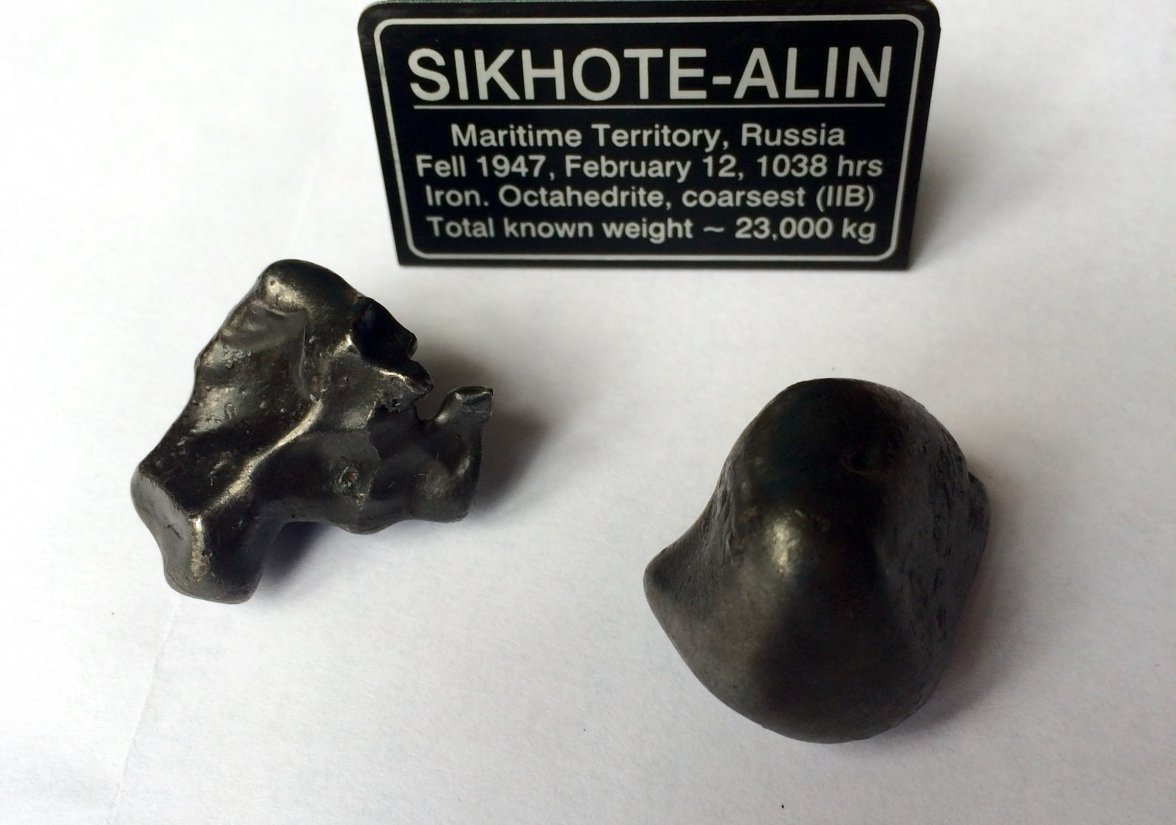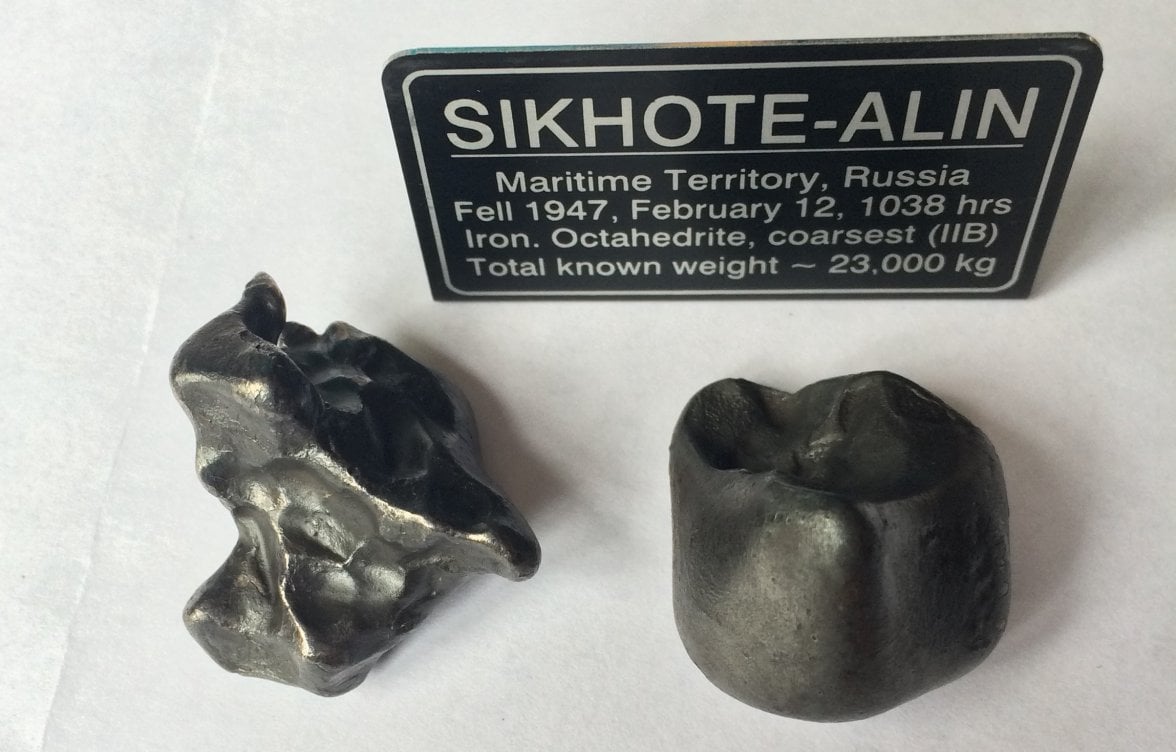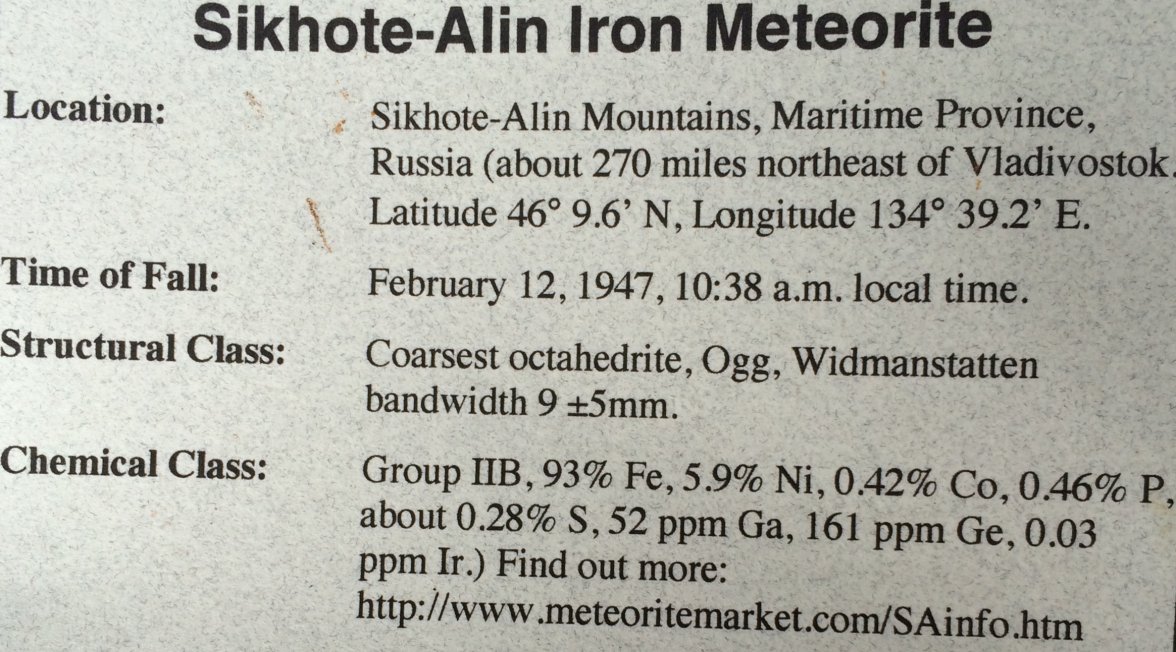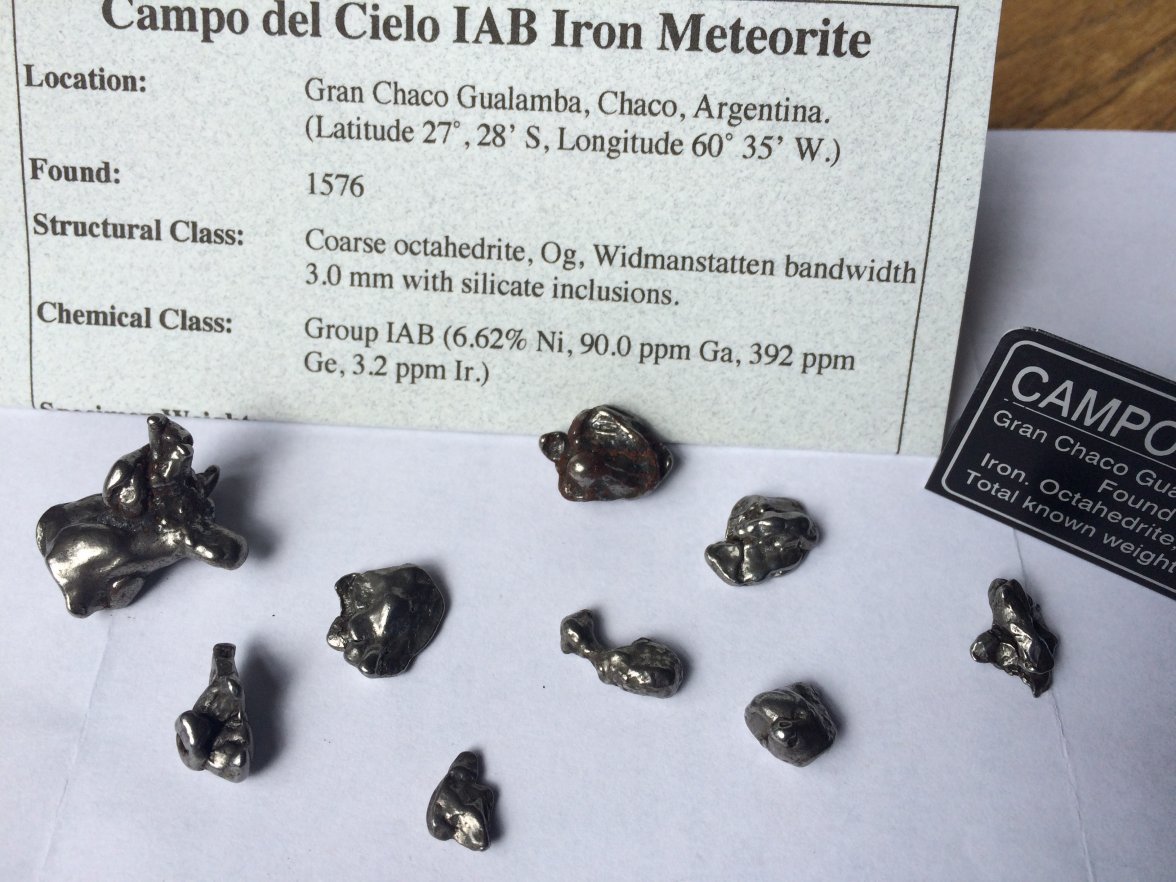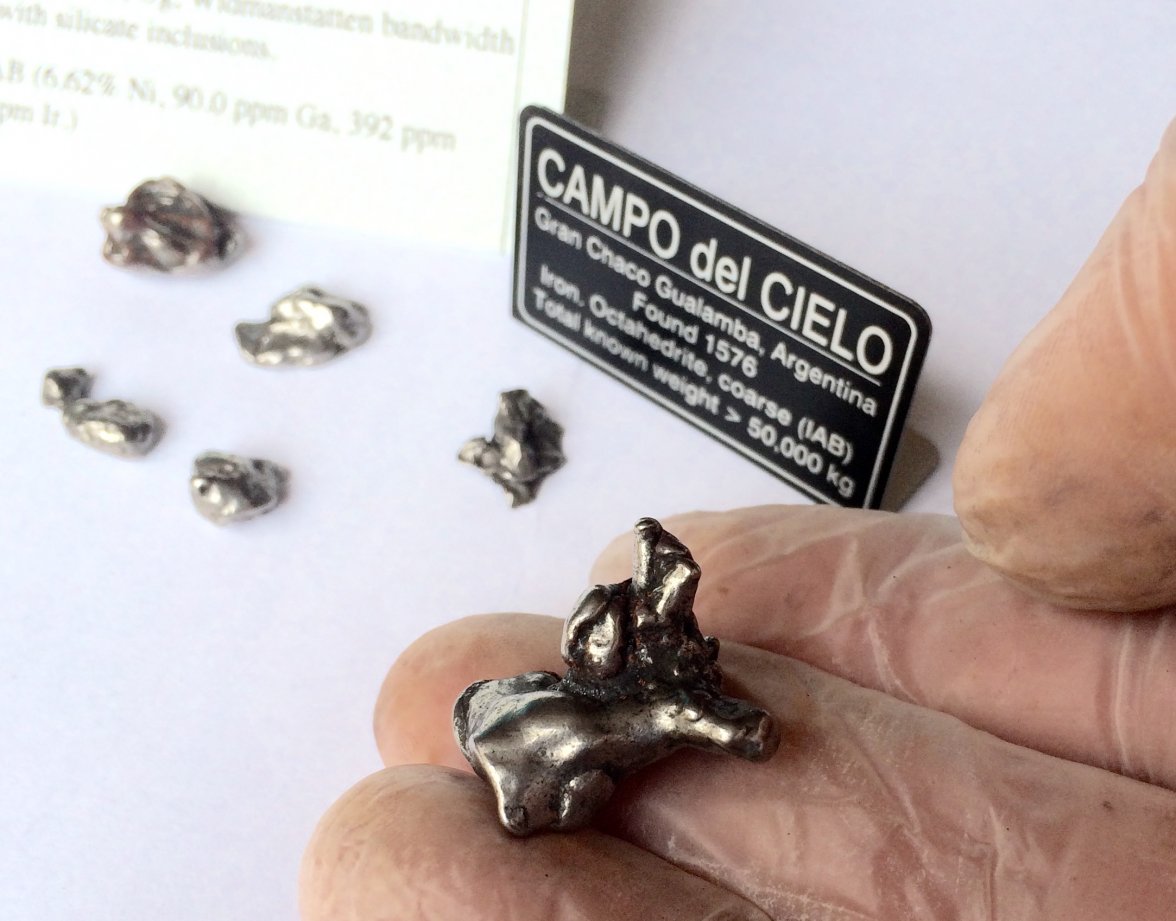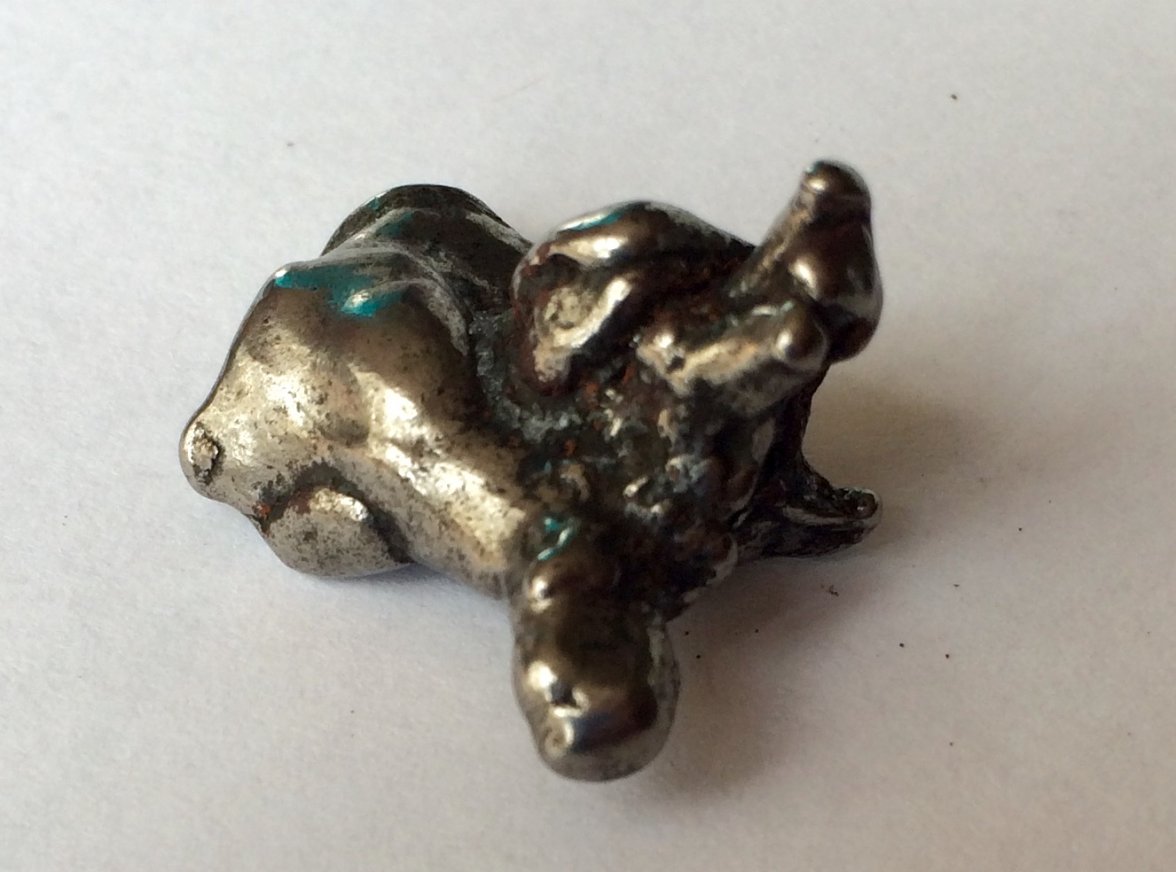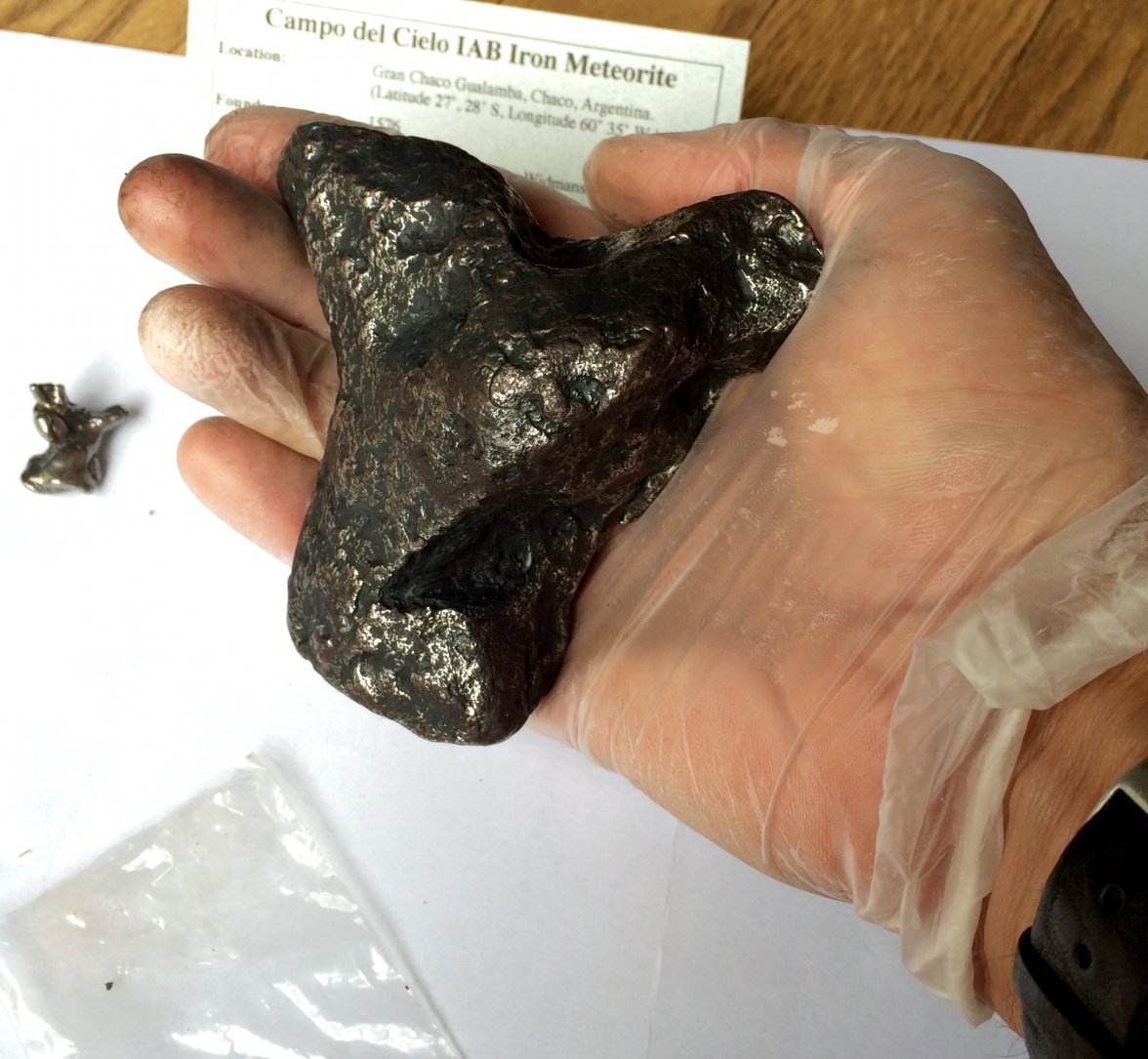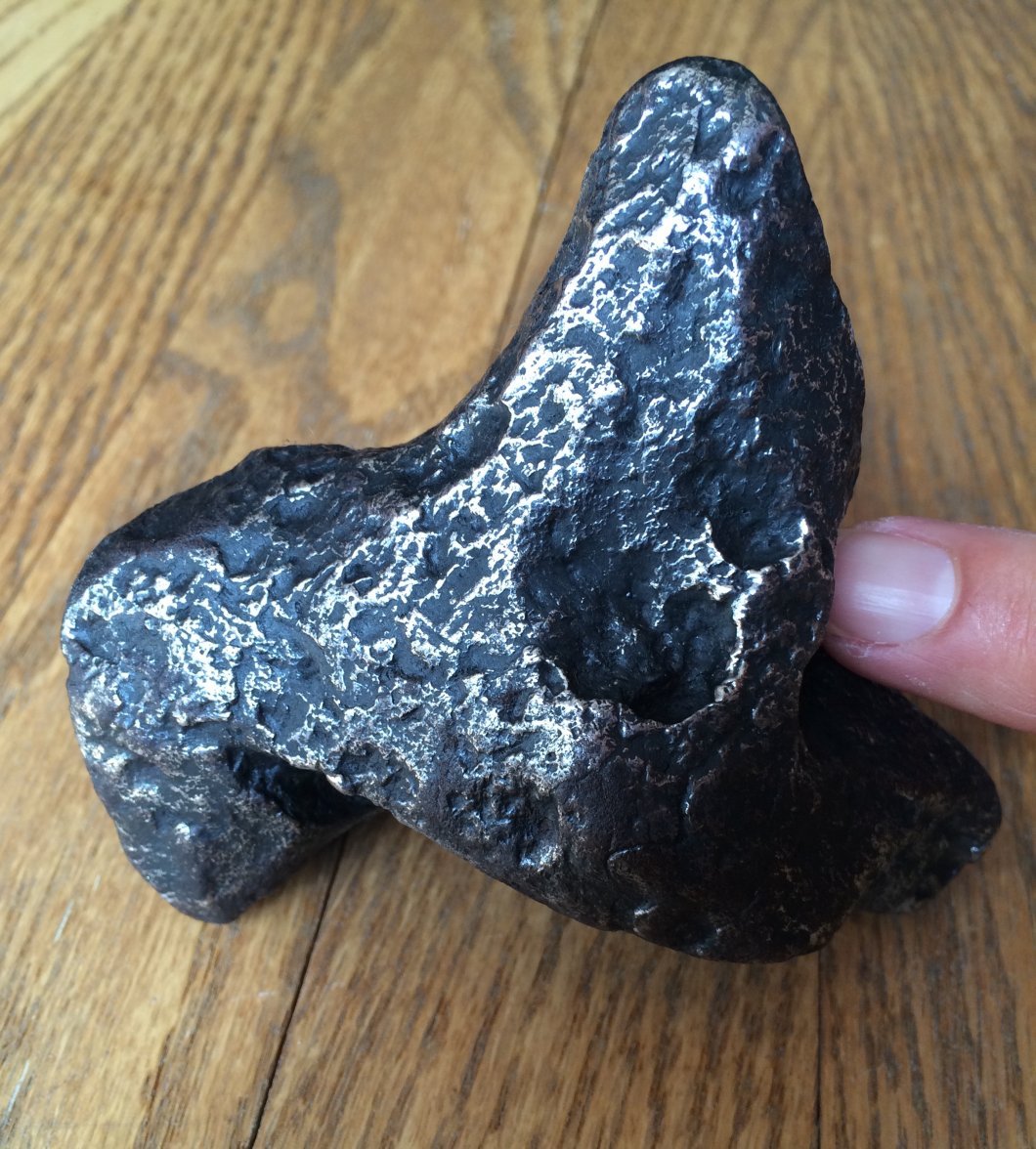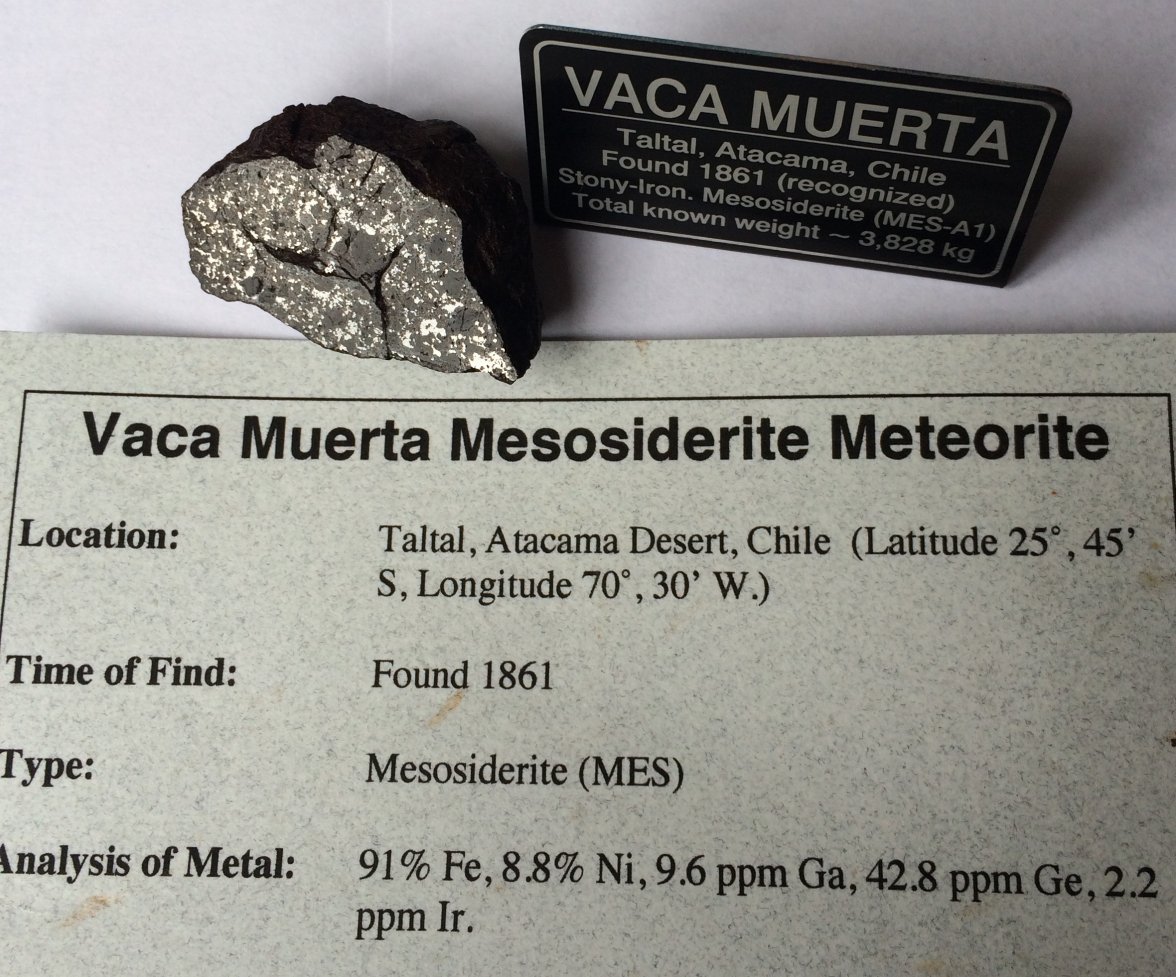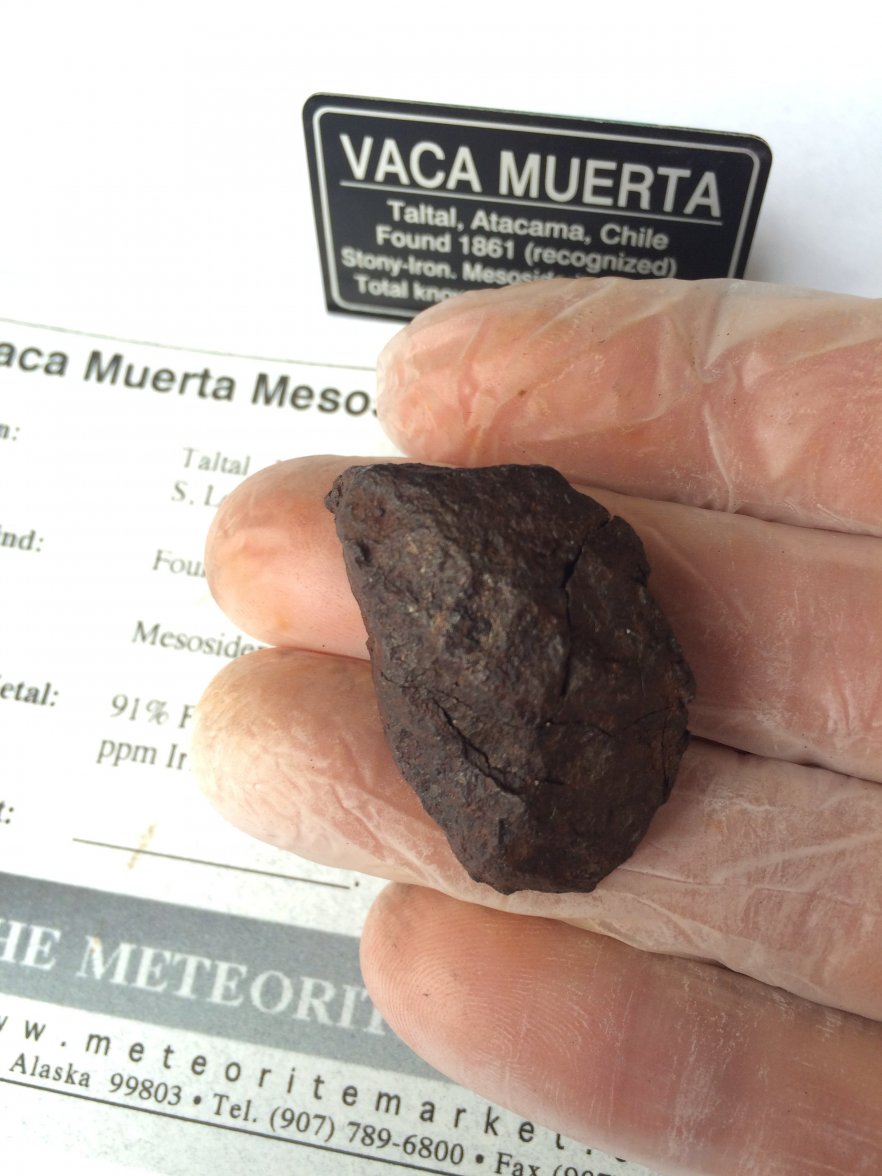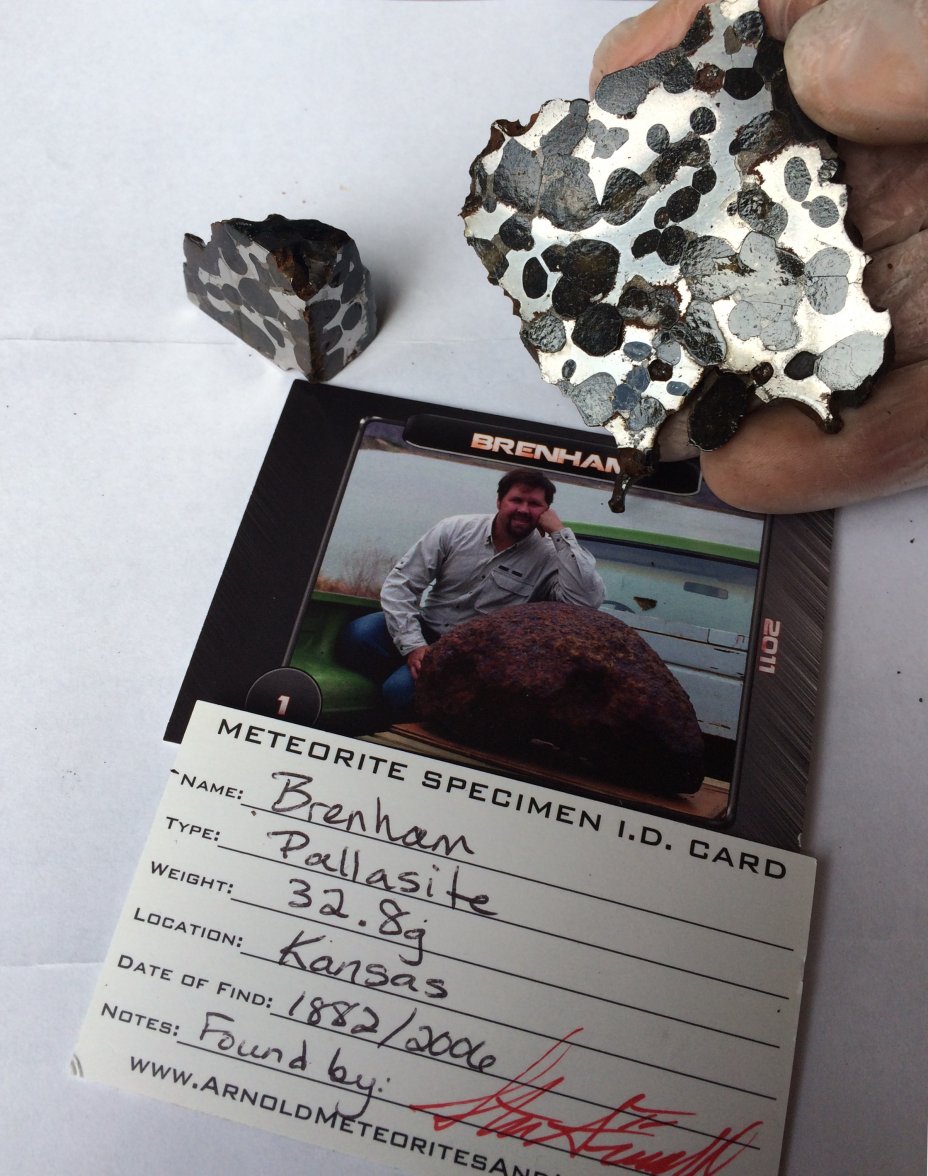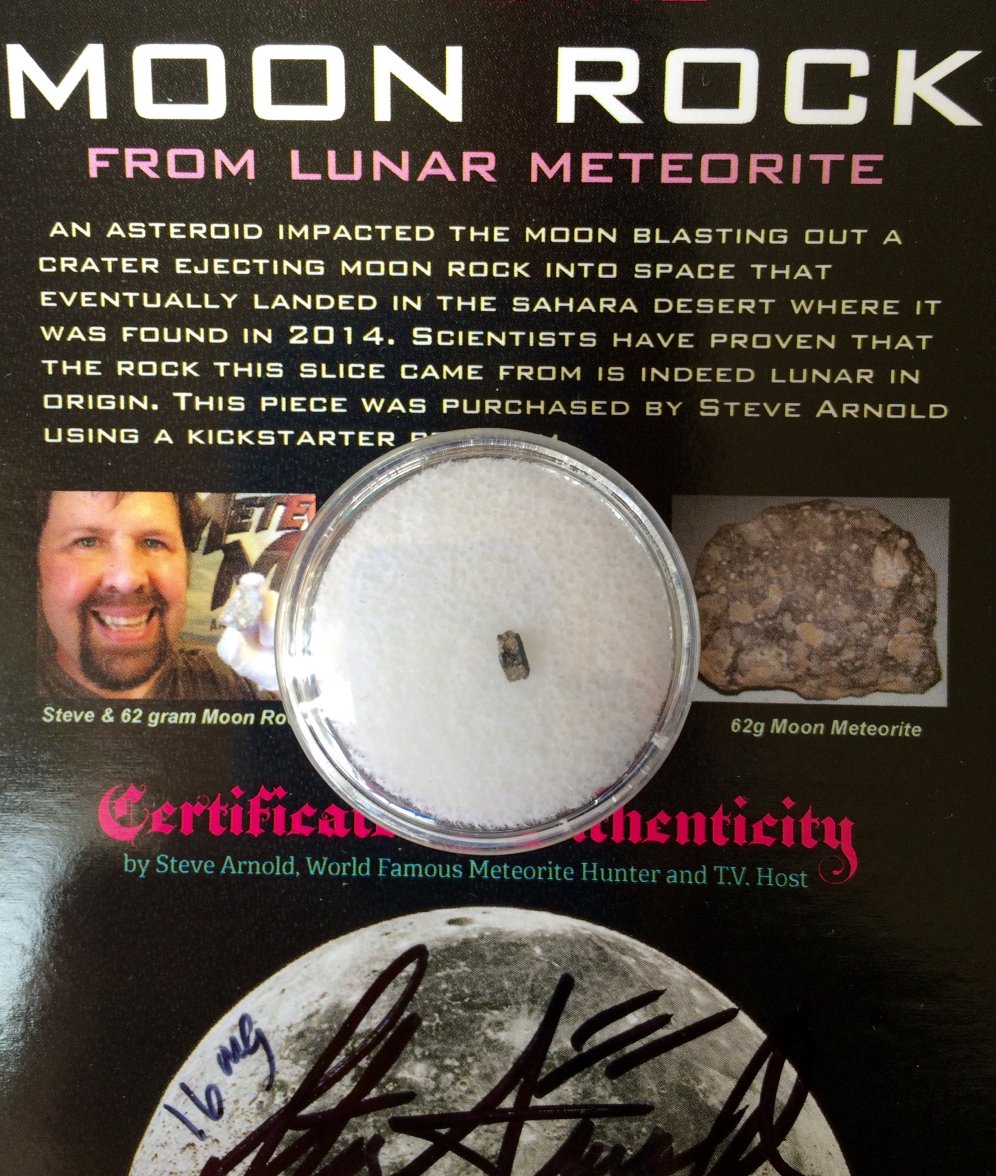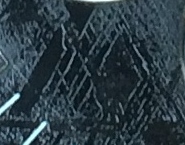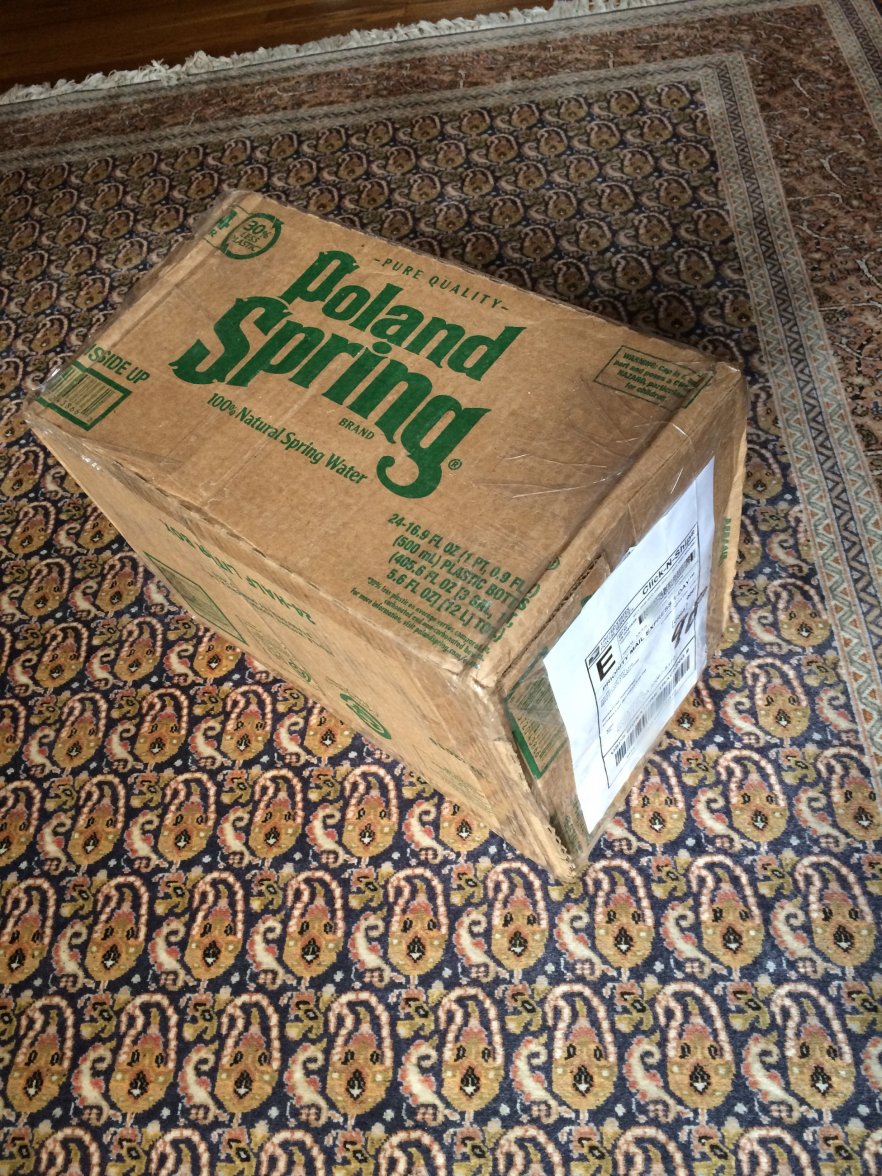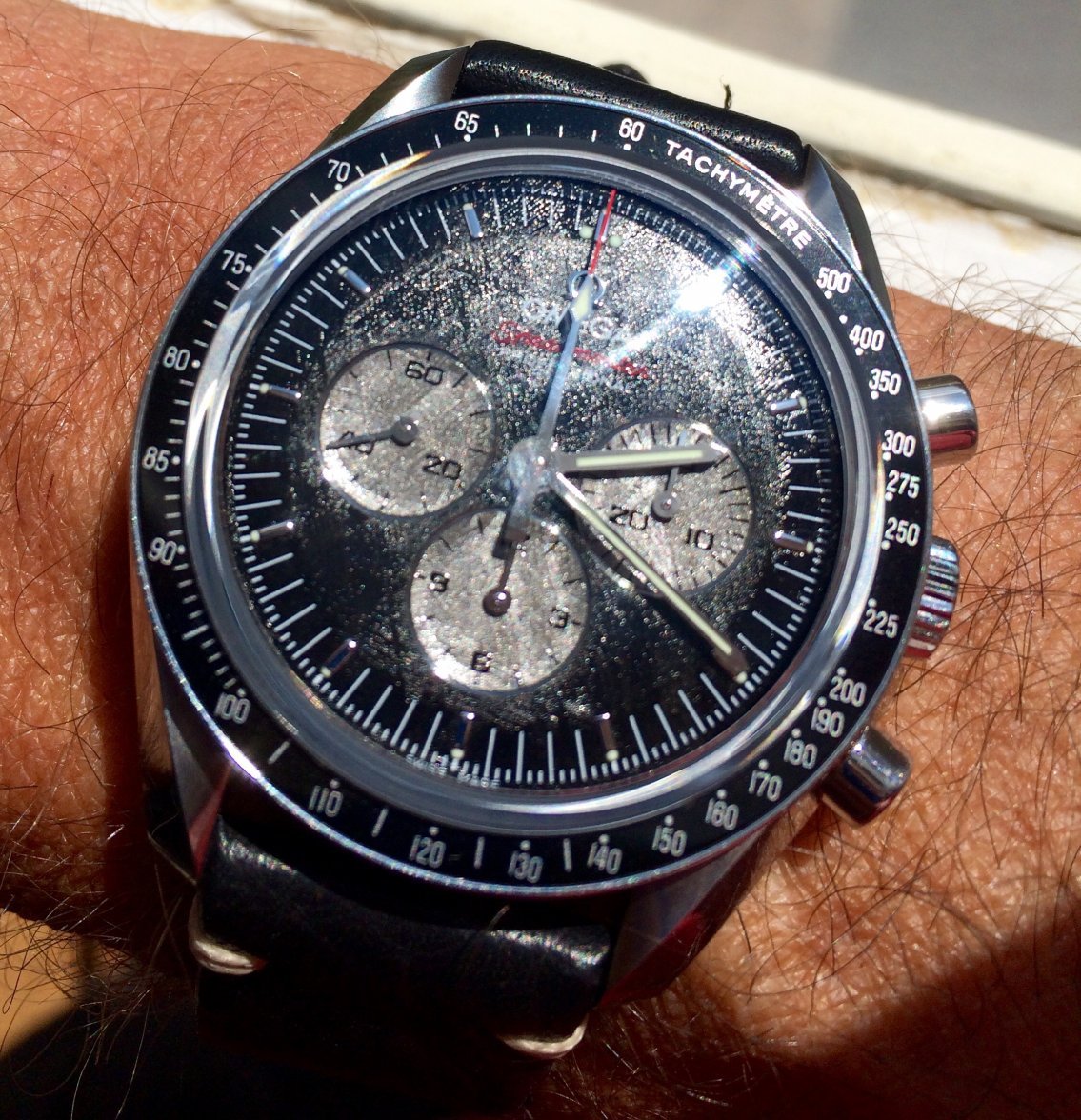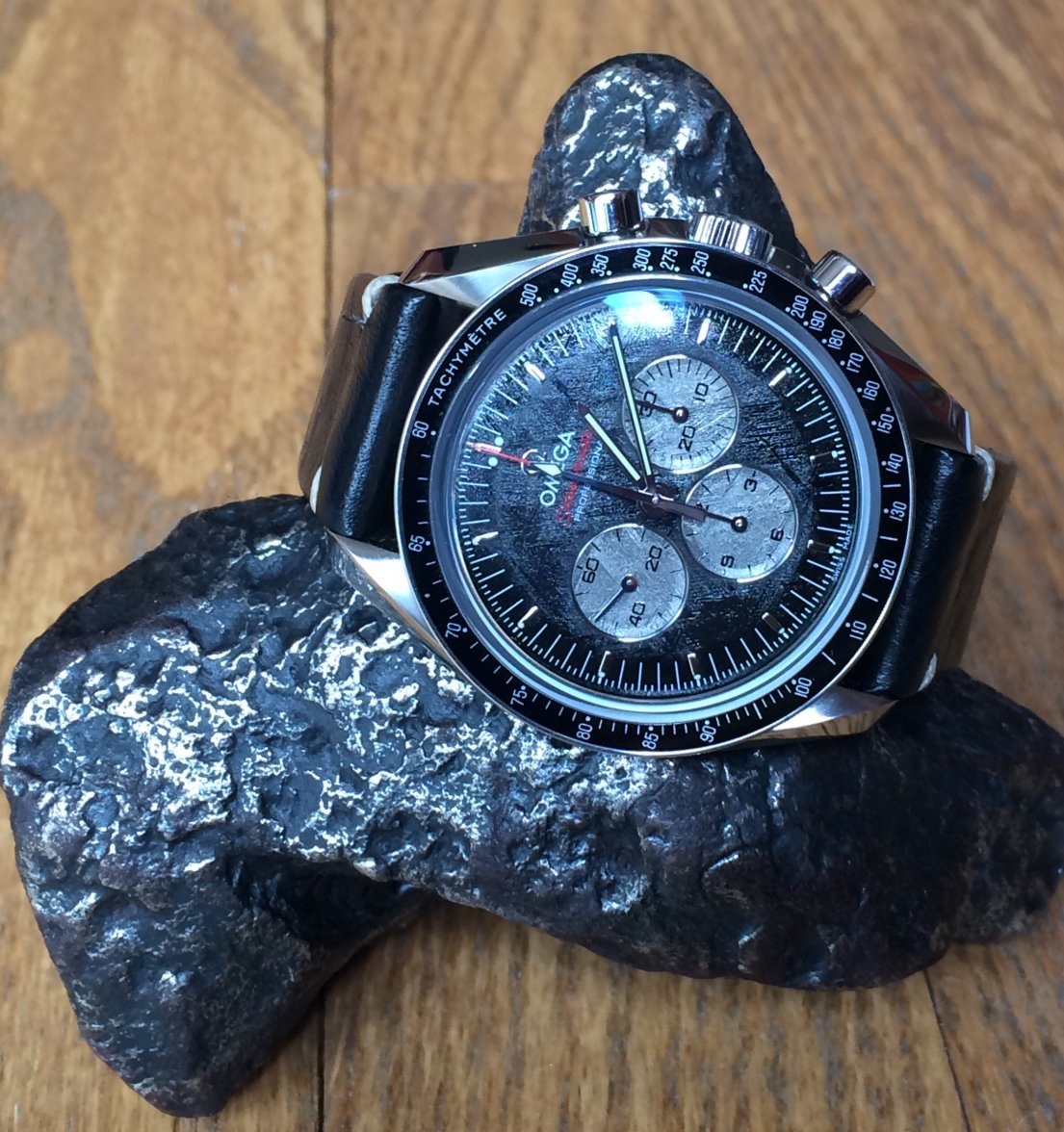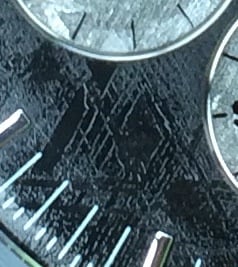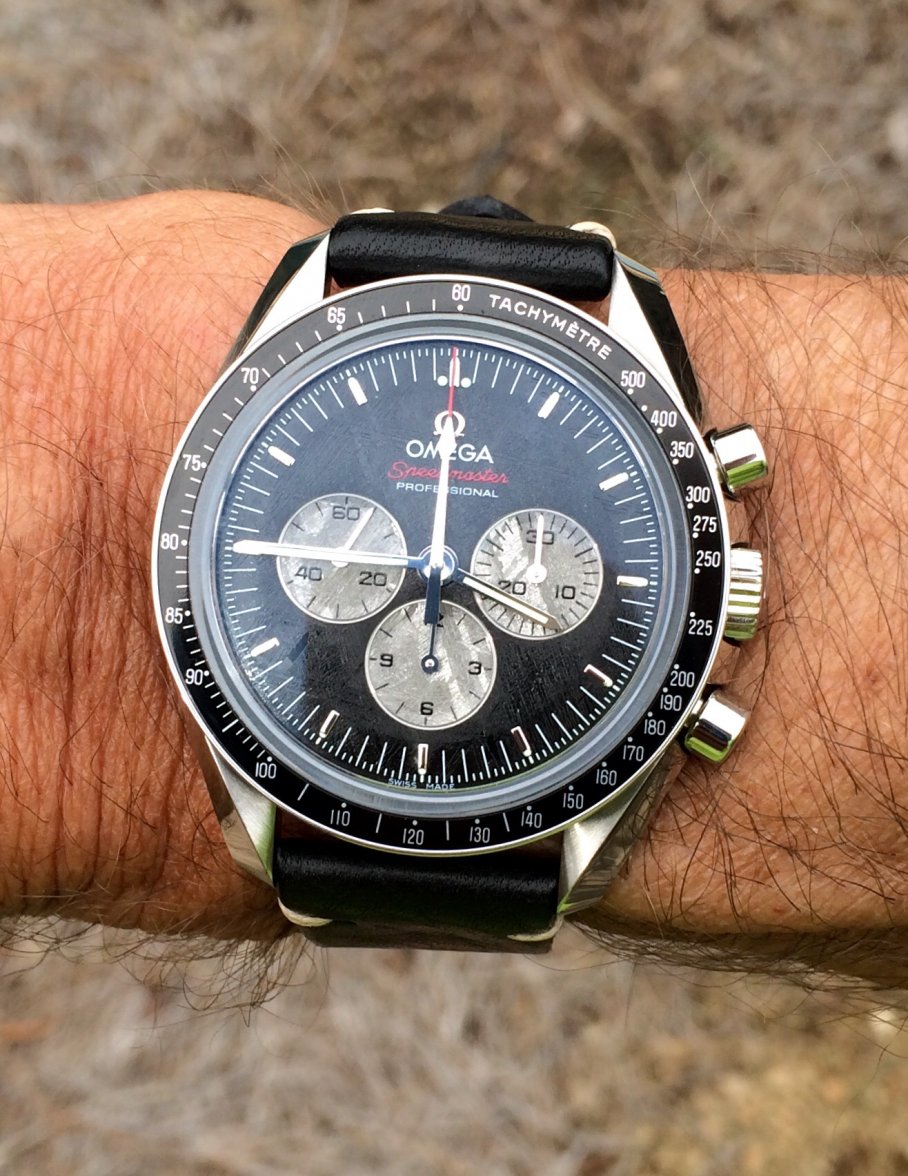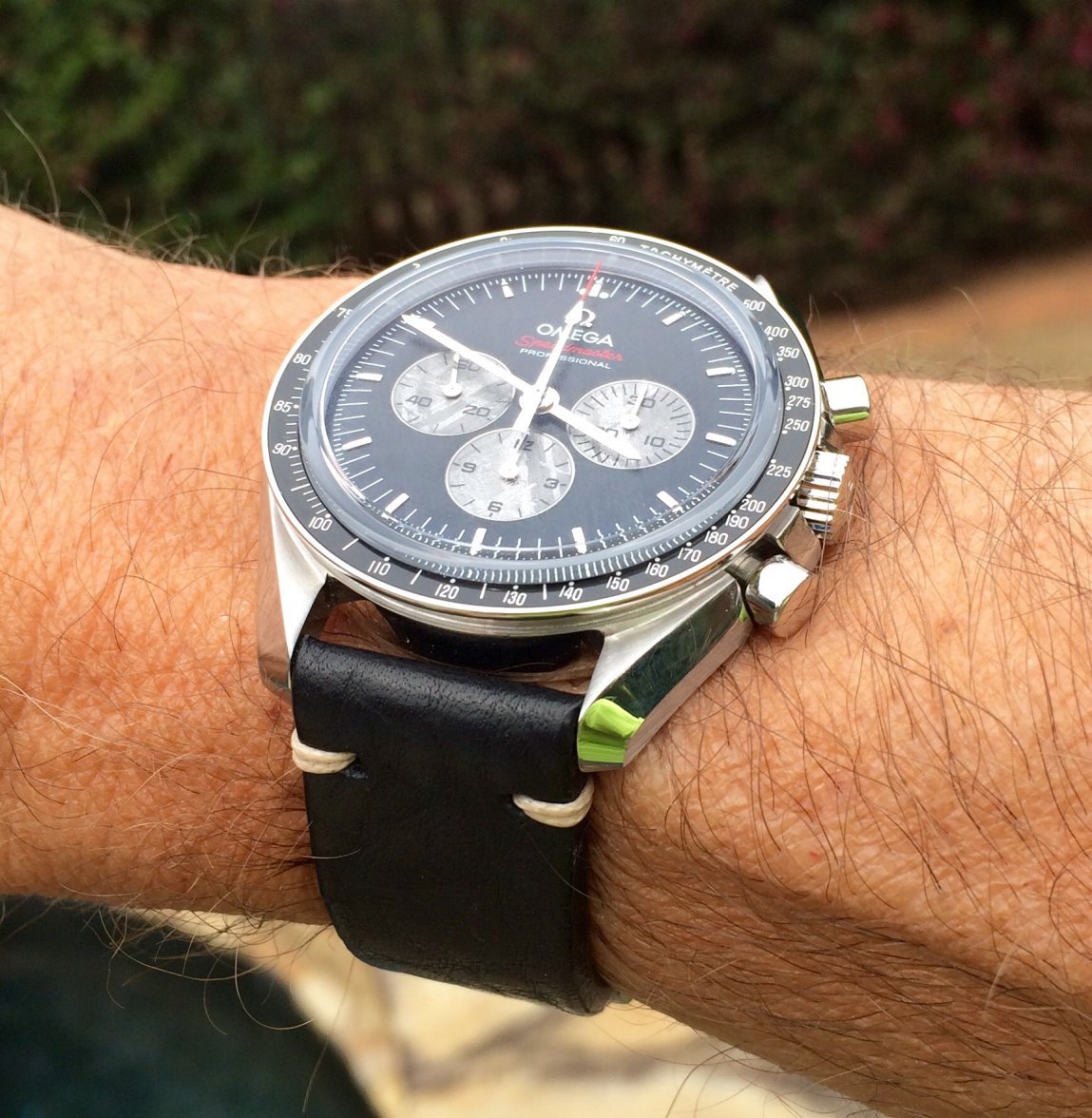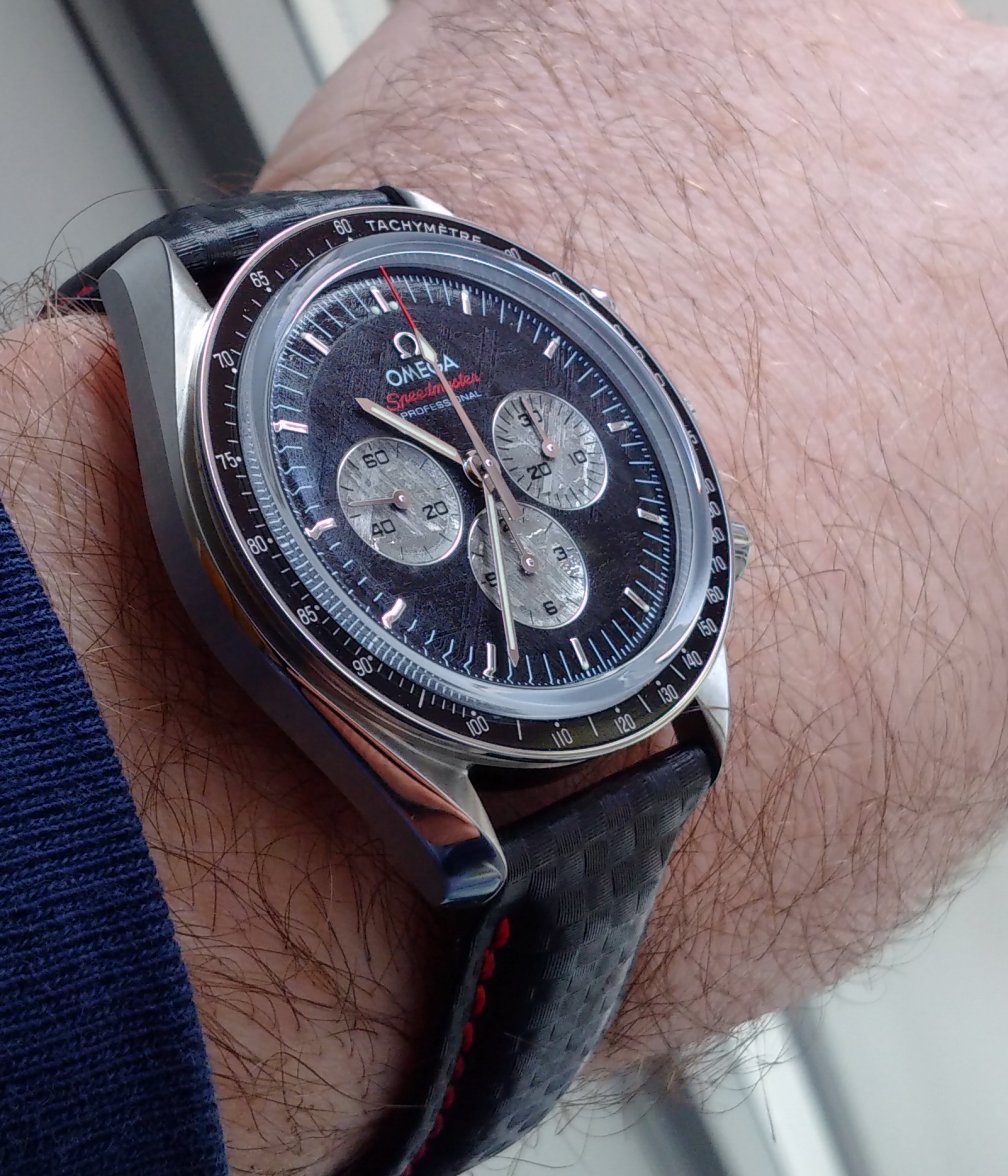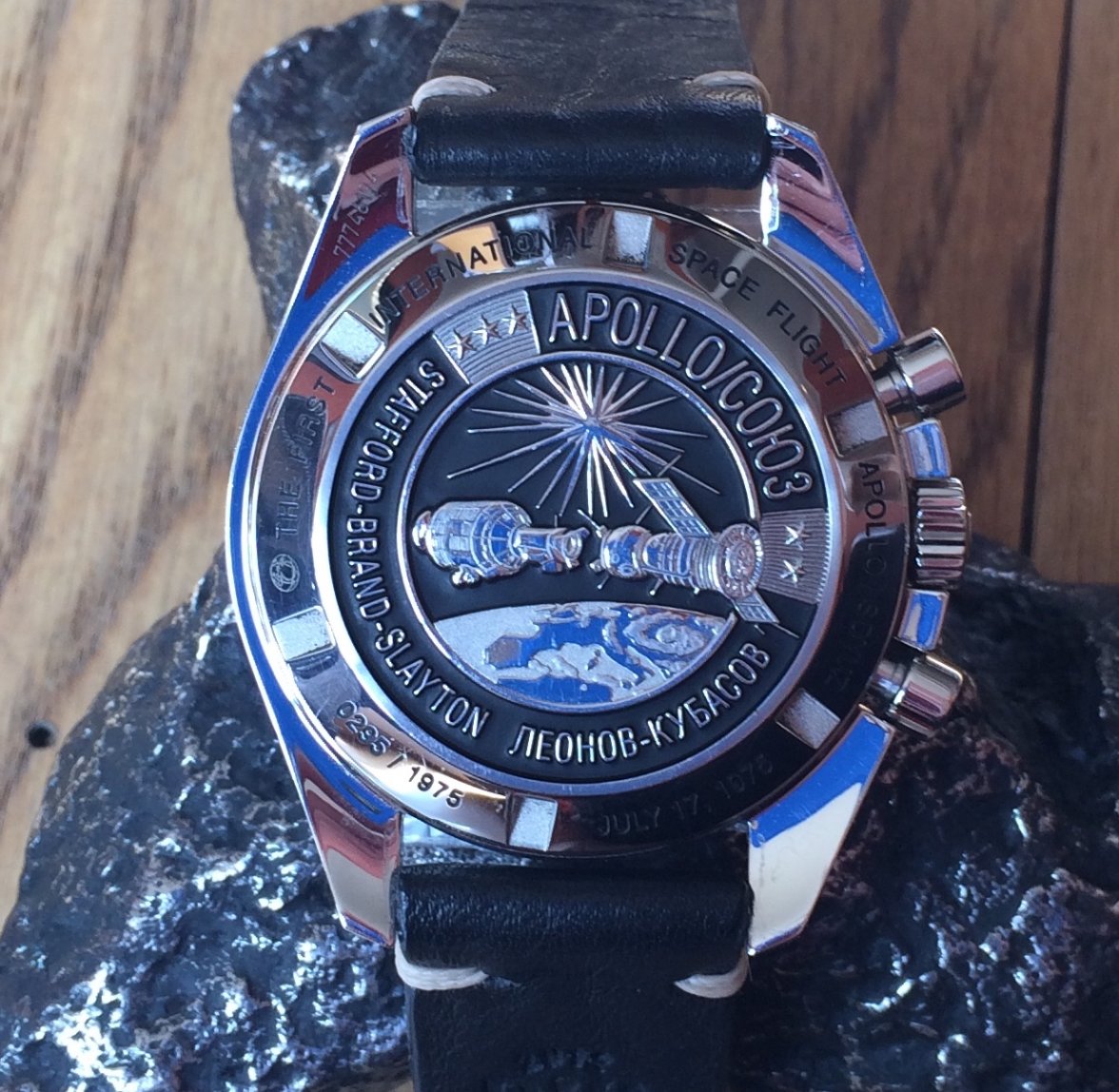dougiedude
··Carpe horologium!I guess I'm a bit of a collector, or is the word hoarder! Anyway, since I started collecting (not purposeful, so again, hoarding!) watches, my other 'addictions' have waned a bit, but here's one that I think you gentlemen and ladies might find of passing interest: some of my meteorites!
I'll start with my favorite space fall: the Sikhote-Alin. This one's cool, because when it fell in Russia in 1947, the residents of the community near where it fell thought that the bright light and huge explosion might be the start of WW III! A large bolide brighter than the Sun that came out of the north and descended at an angle of about 41 degrees. The bright flash and the deafening sound of the fall were observed for 300 kilometres (190 mi) around the point of impact not far from Luchegorsk and approximately 440 km (270 mi) northeast of Vladivostok. A smoke trail, estimated at 32 km (20 mi) long, remained in the sky for several hours.This largest part of this 23,000 kg meteor exploded just before it hit the earth, leveling trees for dozens of miles.
Here are two of my samples, two views. The one on the right is a piece that flew solo through the atmosphere oriented in only one direction, thus the melted bullet shape to it:
Next are my Campo del Cielo, from Argentina, a very old fall originally discovered in 1576. Interesting shapes to some of these individual, intact pieces:
Here's my 882 g piece!
The 'pits' that you see on these specimens are from where the lower boiling point minerals/metals melt off from the friction of the atmosphere as the meteor travels toward earth at super-sonic speeds.
Then there's Vaca Muerta from Chile, found in 1861:
and now my Brenham, from Kansas, USA. It's cool, for the olivine crystal inclusions inside. High nickel content, too, thus the shiny appearance.
This strewn field, originally discovered in 1882 by a farmer, was recently explored by Steve Arnold of 'Meteorite Men' fame, and he found the largest piece ever, in 2006. The piece in my hand is from his meteorite:
Finally, I have this GIGANTIC moon rock!
Too bad I don't have a moon watch yet, to go along with it..🙁.
I'll start with my favorite space fall: the Sikhote-Alin. This one's cool, because when it fell in Russia in 1947, the residents of the community near where it fell thought that the bright light and huge explosion might be the start of WW III! A large bolide brighter than the Sun that came out of the north and descended at an angle of about 41 degrees. The bright flash and the deafening sound of the fall were observed for 300 kilometres (190 mi) around the point of impact not far from Luchegorsk and approximately 440 km (270 mi) northeast of Vladivostok. A smoke trail, estimated at 32 km (20 mi) long, remained in the sky for several hours.This largest part of this 23,000 kg meteor exploded just before it hit the earth, leveling trees for dozens of miles.
Here are two of my samples, two views. The one on the right is a piece that flew solo through the atmosphere oriented in only one direction, thus the melted bullet shape to it:
Next are my Campo del Cielo, from Argentina, a very old fall originally discovered in 1576. Interesting shapes to some of these individual, intact pieces:
Here's my 882 g piece!
The 'pits' that you see on these specimens are from where the lower boiling point minerals/metals melt off from the friction of the atmosphere as the meteor travels toward earth at super-sonic speeds.
Then there's Vaca Muerta from Chile, found in 1861:
and now my Brenham, from Kansas, USA. It's cool, for the olivine crystal inclusions inside. High nickel content, too, thus the shiny appearance.
This strewn field, originally discovered in 1882 by a farmer, was recently explored by Steve Arnold of 'Meteorite Men' fame, and he found the largest piece ever, in 2006. The piece in my hand is from his meteorite:
Finally, I have this GIGANTIC moon rock!
Too bad I don't have a moon watch yet, to go along with it..🙁.
Edited:
